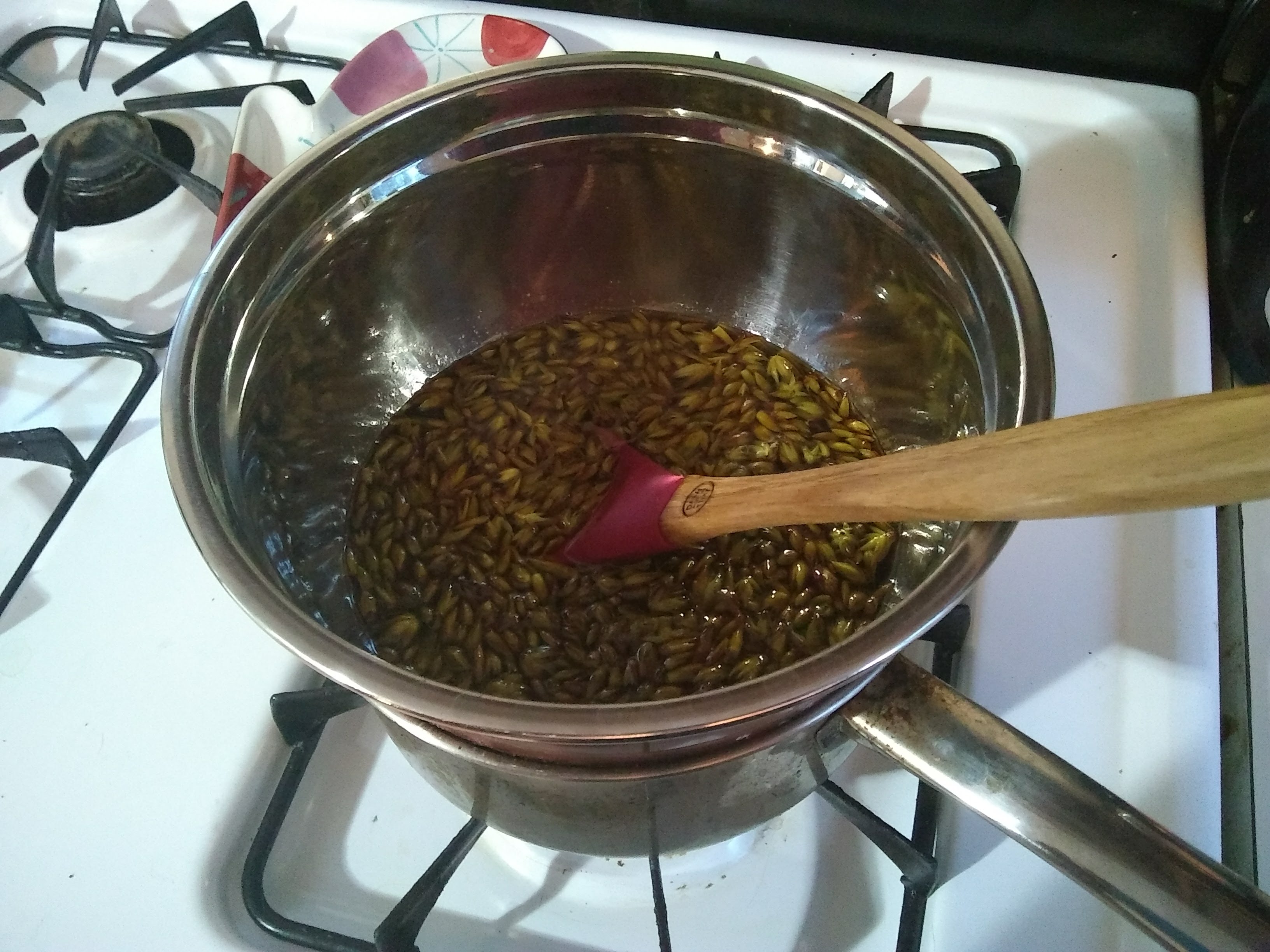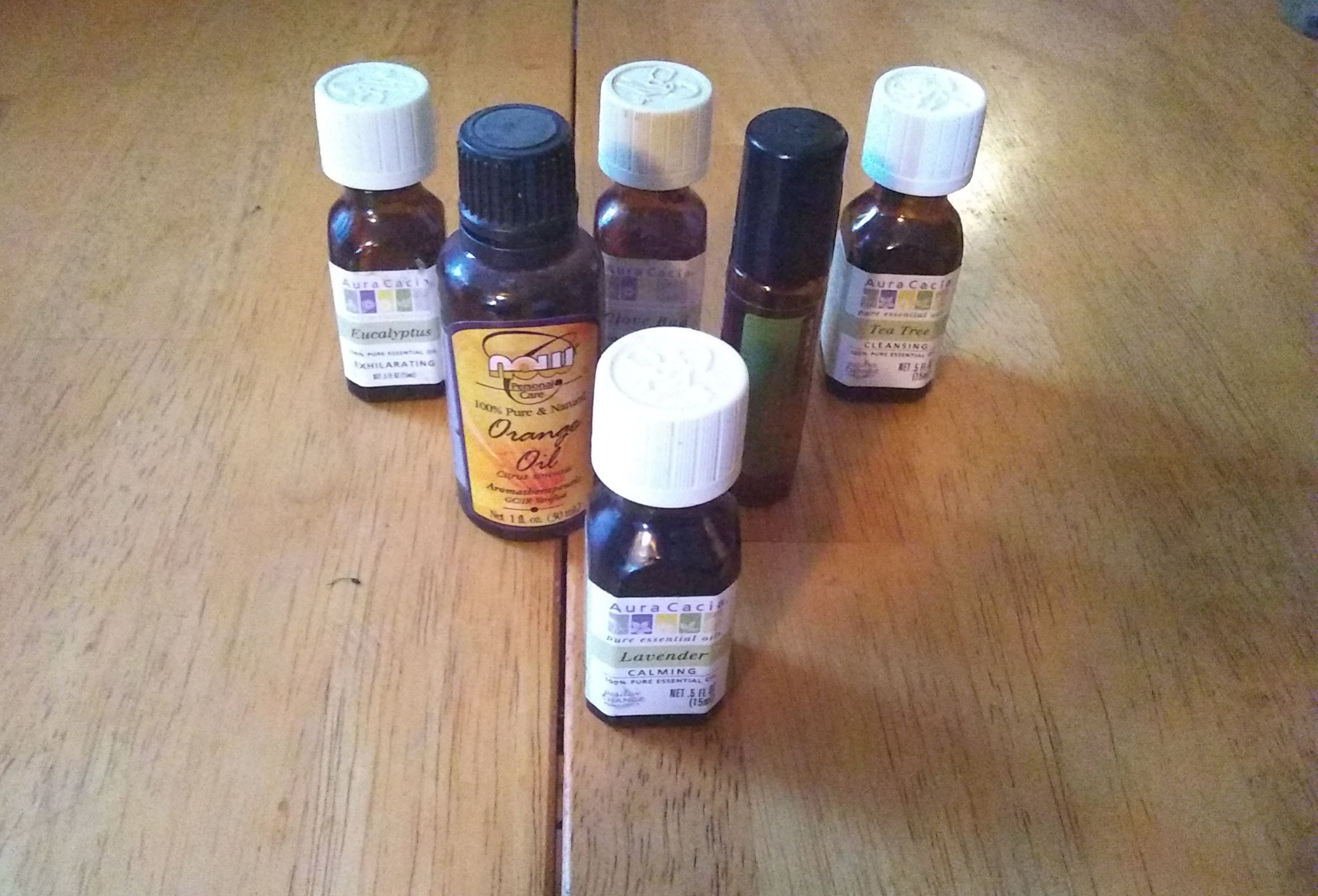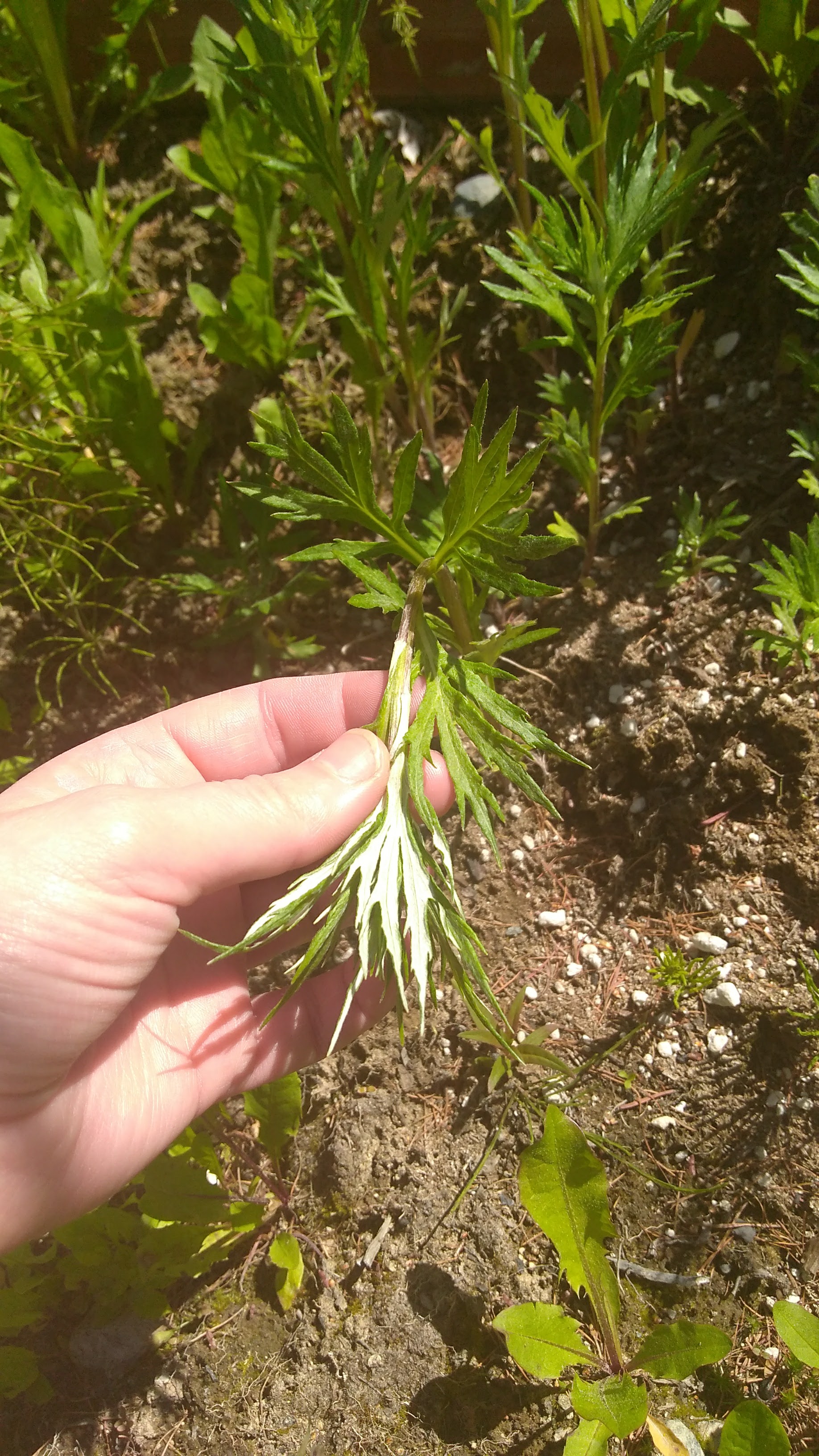Greetings everyone!
If you plan on making any type of balm, salve or massage oil with herbs, you need to infuse the oil with those herbs in some way. There are two main ways to do this: Hot or Cold. Each way has several variations, but in the end it comes down to two different ways. Today I will be talking about one of the two specific ways that I infuse oils which I have found the most useful.
Look squirrel!
When I talk about infusing oils, I am not talking about essential oils. Essential oils are a potent form of an herb or plant. I will discuss the pros and cons to using them for balms, salves and massage oils in a later post.

Using the hot method to make an oil infusion of cottonwood buds.
The first way I am going to discuss is quicker: The hot method. Back to infusing oils!
Things you’ll need
- Double boiler (you can also make one yourself by putting enough water in a pot then put a heat safe bowl on top, which is what I personally do)
- Carrier oil (we’ll discuss this in another post) roughly one cup per 29 grams (see below)
- Herbs that you are going to infuse; how “fluffy” the herb is will determine how much carrier oil you’ll need. The general rule is 29 grams (approximately one ounce) to one cup of oil.This goes for hot or cold. However, I have found with “fluffier” herbs like arnica or calendula I need to add about a cup more oil
- Stirring spoon
- (optional) Potato masher
- Mesh Strainer
- Muslin, cheesecloth or other thin material you can put in the mesh strainer
- Measuring cup
- Container for the oil (if you’re not going to make it directly into a balm)
Step one: put the herb(s) in the bowl and crush them. You can use your hands or a potato masher.
Step two: pour the oil in. I use olive oil because of the properties and the availability of it.
Step three: bring water to a simmer. You can leave the bowl on while the water heats up or wait until the water is simmering. You don’t want it to boil or the oil will get too hot and be ruined(in most cases. If you’re using lard or avocado oil, which have high flash points, it’s less of a worry).
Step four: constantly stir – make sure that the oil doesn’t get too hot. If you have a candy thermometer, 140 degrees is what you’re not wanting to go above. If you don’t, you can occasionally test the heat by dripping a little oil onto your hand. If it’s just slightly too warm you’re fine. However, everyone’s heat tolerance is different so if you’re not sure, get a candy thermometer.
Step five: heat oil for 1 hour 30 minutes to 2 hours. If you want to do longer, I would not go above 3 hours. I like to stir and watch some shows or read since it’s such a long time.
Step six: strain the oil. Put your cheesecloth in the mesh strainer and either pour into a separate bowl or directly into the container. Use the potato masher to get as much oil out of the herbs as possible
Step seven: put into containers or get ready to make salve. If you don’t plan on making it into anything right away, make sure that it stays in a dark place.
A lot of recipes will call for the simmering of 30-60 minutes. I have found that amount of time to be lacking in effectiveness for the final product. An hour and thirty minutes is the minimum time that I have found effective.
Next week we will go over the cold method for infusing oil.




